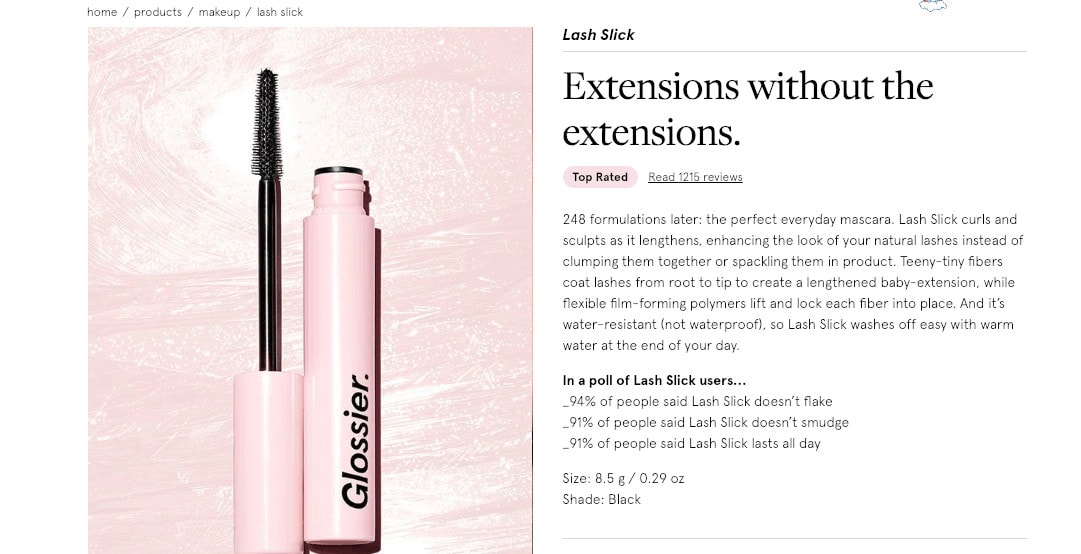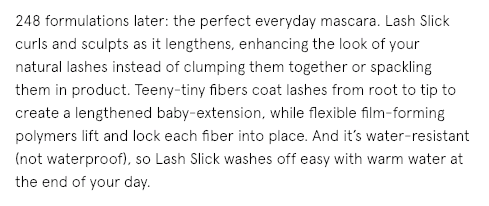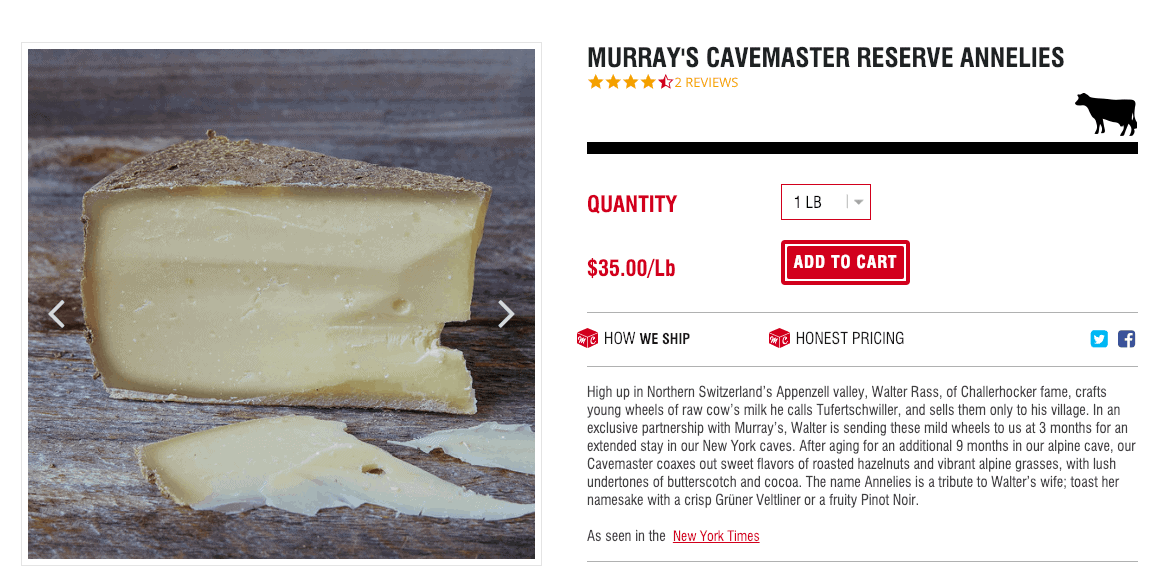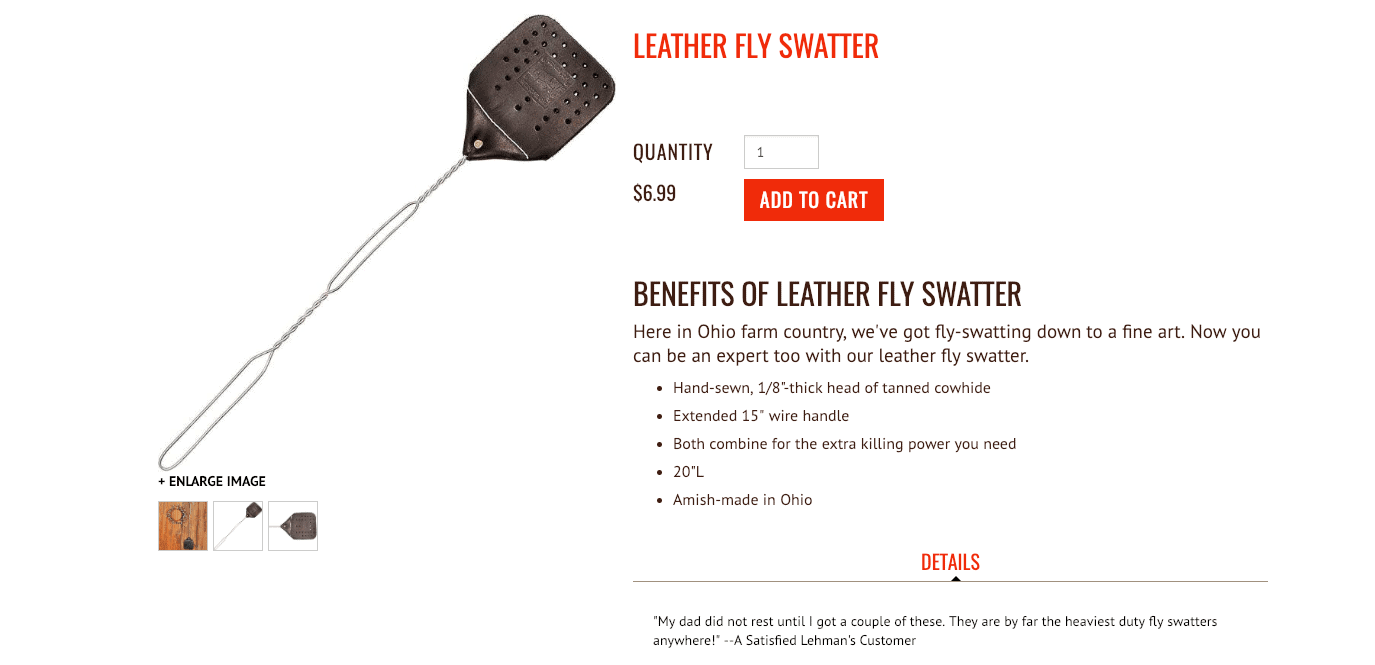Nowadays, setting up an online store takes only a few minutes. Fill out your store settings, add photos, and you can be selling right away. But writing product descriptions that convince people to buy in the first place? That takes a little more effort.
How do you describe a product to a new customer? What information needs to go on a store page, and how can you convince customers to click “Add to Cart”?
In this post, I’ll talk about how to write product descriptions and provide some good examples. These simple rules will make sure that your store listings are informative, authentic, and convincing—and optimized for search engines too.
Start selling online with Jimdo.
Simple rules for writing better product descriptions:
- Think of questions a customer might ask
- Always include the details: dimensions, size, materials, etc.
- Tell the story of your product to make it feel unique
- Make text easy to scan and read quickly
- Add testimonials and social proof
- Optimize product descriptions for SEO too
Use product descriptions to answer customer questions
When someone makes a purchase from your online store, you’re asking them to take a leap of faith. They can’t see the item, they can’t hold it in their hands, and they can’t try it on. That’s where a good product page comes to the rescue. If you’re not sure what to write, focus on the questions a customer would have. How big is it? How does it fit? Where was it made? Why does it cost this much?

By answering the right questions, you also show that you understand your customer’s problem statement. “No more sticking to the jar!” “These pants won’t shrink in the wash!”
Take a look at this example from Glossier:

The mascara enhances the natural look of your lashes, they say, “instead of clumping them together or spackling them in product.” They’ve anticipated a likely question, “Is this mascara going to be clumpy?” and answered clearly with, “Nope!” As a customer you think, “Great! They understand what I want.”
Learn how to start your own website today!
Always include plenty of product detail
When you write for the web, it’s common to hear “don’t use too much text” or “people don’t read much on websites.” That’s all true, but you should still include all the necessary details and product specs. That way people know what they’re getting, and you can prevent unnecessary returns and refunds from people who accidentally order the wrong thing. Think about size, weight, color, materials, where the item was made, etc.
In the Glossier example above, notice how they specify the size, the shade, and also mention that “it’s water-resistant (not waterproof).” This clearly sets expectations so customers knows what they are getting. After all, there’s no upside to tricking a customer into buying something that isn’t right for them.
Also, listing the specs shows that you know your item well and pay attention to detail, which further solidifies the customer’s trust in your store.
Tell a story to differentiate your store from big businesses
Chances are high that your item (or something similar) is available from a big box online retailer at a lower price. But fortunately for small businesses everywhere, consumers are motivated by more than price and convenience.
Take, for example, this food product description from Murray’s Cheese in New York:

Could you find a cheese at a supermarket that costs less? Probably. But Murray’s wants to entice you to buy this cheese. To do this, they use scarcity (this cheese is only available in one small village in Switzerland), they tell the story of how the cheese is made, and they describe the flavor in mouth-watering terms. Do you know what alpine grass tastes like? Me neither, but it sounds delicious.
Does it really matter that the cheese is named after the cheesemaker’s wife? Of course not. But the story makes you feel like you are buying something special, something you can’t get at any old grocery store.

Write good product descriptions that are easy to read quickly
You should always format product text particularly for the web and for how people read. Headlines, bullets, short paragraphs, and lots of pictures are all ways that you can make online shopping easier for customers. You might hear advice to use power words or superlatives, but it’s best to just stick to natural language that a real human being would actually use.
This product description example from Lehman’s shows that you don’t need to be too complicated:

In just a short paragraph and some bullets, it tells you what it is and why it’s special, so you might be more willing to buy it. They also provide some short testimonials from happy customers. Suddenly a $7 fly swatter sounds pretty good, even though you could get a cheaper plastic one.
How do you balance storytelling with skimming? Your best bet is to write a short, descriptive paragraph, and then follow it up with some bullets. That way you’ll satisfy people who want to skim, and people who want to dive in to a more detailed story.
For tips on good product photos, check out our post on How to Build a DIY Lightbox.
Add customer testimonials and social proof to your product pages
One thing that all these sample product descriptions have in common is that they all use some form of “social proof” to sell. Those could be in the form of reviews, testimonials, or “as seen in” links to newspaper articles and blog posts.
Why do customers care what random strangers think? Because social proof is a powerful psychological motivator. Before you take a leap and buy something, you like to know that others have gone before you and had a good experience. According to a recent survey by BrightLocal, consumers read on average 10 customer reviews before they feel like they can trust a small business with their purchase.
Develop product descriptions for SEO
Customers aren’t the only ones reading your text. Search engines do, too. That’s why this text is one of the best ways to boost your store SEO and make your products show up on Google.
- For SEO purposes, start by giving your products very clear, keyword-relevant names. Just say what the item is—no fancy wordplay or puns necessary. (For example in the Glossier listing above, it might be better to title it “Lash Slick Mascara” rather than “Extensions without the extensions”, which means basically zilch to a search engine.)
- Then, make sure to add some naturally-occurring keywords to your text. This shouldn’t feel artificial—ideally you are still describing your item accurately and conversationally. But it does mean that your listing for cheese should actually include the word “cheese”.
- Don’t copy-paste the manufacturer’s description or text from another website—this invites bigger websites to outrank you for the same item.
Sure, there are product description generators out there, but why settle for something generic when you can write something unique and convincing? I hope from this post I’ve convinced you that it’s easy to write effective product descriptions—and that it’s actually worth your time to write them yourself.

